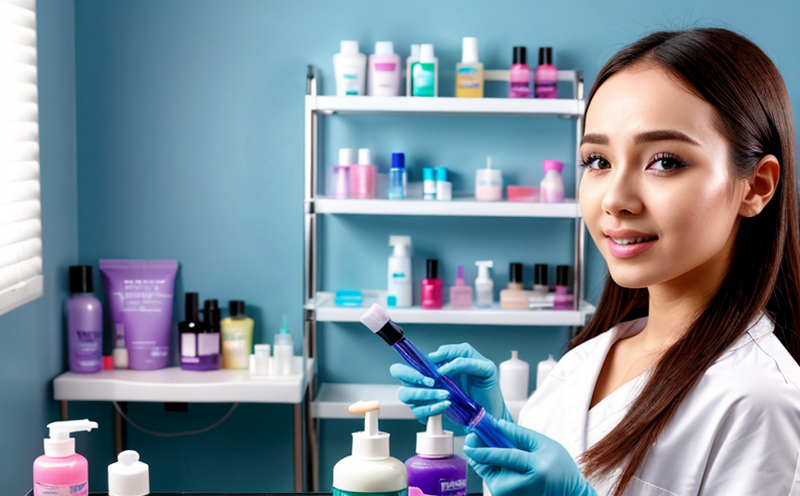USP Microbial Limits Testing in Personal Care Products
In the cosmetics and personal care industry, ensuring product safety is paramount. This is where USP <1111> Microbial Limits Testing comes into play. The United States Pharmacopeia (USP) [1] standard <1111> defines the microbial limits for cosmetics and personal care products, ensuring that these items are safe to use on human skin without causing harmful infections or irritations.
This testing is crucial in several ways. It helps manufacturers meet regulatory requirements, protects consumers from potential health risks, and ensures product quality throughout the supply chain. The standard applies specifically to lotions, soaps, shampoos, and other products that come into direct contact with skin or mucous membranes.
The testing process involves collecting samples from the product, inoculating them onto appropriate media, incubating under controlled conditions, and then quantifying any microbial growth. This can include bacteria, yeast, and mold species. The results are compared against the limits set forth by USP <1111>, which vary based on the type of product being tested.
For instance, products that have a high moisture content like lotions or shampoos may have stricter microbial limits than dry products such as powders. This ensures that even small amounts of contamination could still pose a risk if not controlled properly.
The significance of this testing extends beyond just meeting regulatory standards; it also enhances consumer trust and satisfaction by providing assurance about product safety and quality. Companies that adhere to these guidelines can avoid costly recalls, lawsuits, and damage to their brand reputation due to contaminated products.
In summary, USP <1111> Microbial Limits Testing is a critical step in ensuring the safety of cosmetics and personal care products. By adhering to this standard, manufacturers demonstrate their commitment to protecting public health while maintaining high standards of quality control throughout production processes.
Why It Matters
The importance of microbial limits testing cannot be overstated in the cosmetics industry. Microbial contamination can lead to serious health issues such as skin infections, allergic reactions, or even systemic illnesses if ingested through oral care products like toothpaste.
- Risk Management: Ensures that potential hazards are identified and managed early in the product development lifecycle.
- Consumer Protection: Safeguards end-users from harmful microorganisms present in their personal care items.
- Regulatory Compliance: Helps companies comply with international standards like USP <1111>, thereby avoiding penalties and legal actions.
- Quality Assurance: Provides objective evidence that supports claims made about the safety and efficacy of a product.
Avoiding microbial contamination is essential for maintaining brand integrity and fostering long-term customer loyalty. It also reduces the likelihood of adverse events associated with improper use or storage conditions, which can further enhance consumer trust in your products.
Applied Standards
| Standard Name | Abridged Title | Description |
|---|---|---|
| USP <1111> | Microbial Limits Tests for Cosmetics and Personal Care Products | This USP standard establishes maximum allowable levels of certain microorganisms in cosmetic products, including lotions, soaps, shampoos, etc. |
| ISO 22716:2011 | Safety of Cosmetics - Good Manufacturing Practices | An international standard providing guidance on manufacturing practices to ensure safety and quality in cosmetics production. |
| EN 935-1:2014 | Microbiological Examination of Cosmetics - Part 1: General Requirements | A European harmonized standard outlining general requirements for microbiological examination of cosmetic products. |
Note that while these standards provide comprehensive guidelines, they serve different purposes. USP <1111> focuses specifically on microbial limits in cosmetics and personal care items, whereas ISO 22716:2011 addresses broader manufacturing practices, including quality management systems.
Benefits
- Enhanced Consumer Confidence: Demonstrates a strong commitment to safety and quality, leading to increased customer trust.
- Minimized Risk of Product Liability Claims: By ensuring compliance with stringent microbial limits, companies reduce their exposure to legal risks.
- Avoidance of Regulatory Penalties: Ensures that all products meet regulatory requirements, avoiding fines and other sanctions.
- Improved Brand Reputation: Consistent adherence to high standards can significantly boost brand image and market position.
- Promotion of Safe Products: Safeguards consumers by preventing the introduction of harmful microorganisms into personal care items.
- Better Manufacturing Processes: Identifies potential issues early in the production process, allowing for corrective actions before they become major problems.
The implementation of USP <1111> Microbial Limits Testing not only meets regulatory requirements but also contributes to a safer and more reliable supply chain. This ultimately translates into better products that consumers can trust.





